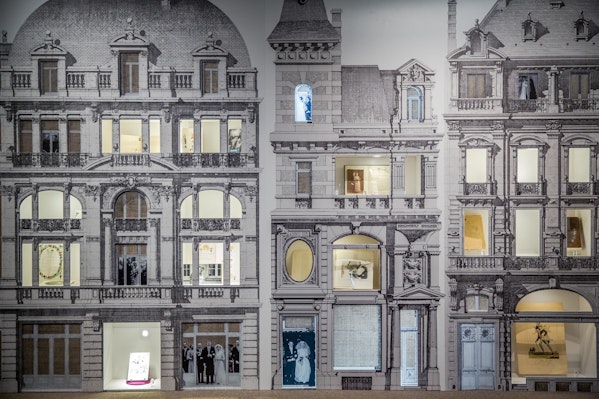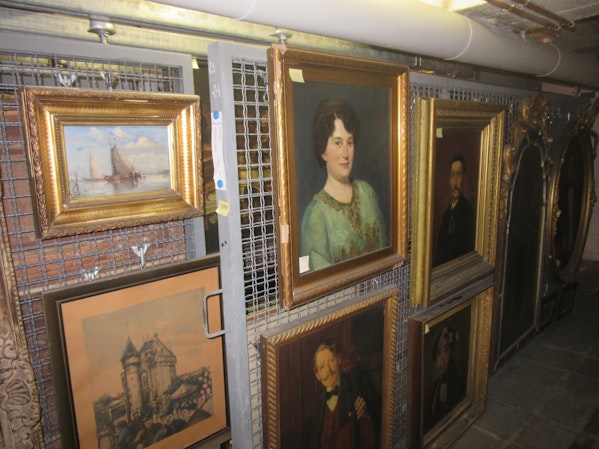The history of Brussels in 9 museums


Brussels used to be just a chapel on an island in the river Senne around 580, now it’s this multicultural and often surrealist city we love. One thing is certain, Brussels never ceases to surprise!
1. Coudenberg Palace
Once upon a time in Brussels, there was a palace envied by many other princely residences in Europe. Traced back to the 12th century, it quickly became a landmark for Emperor Charles V through the 18th century, until it finally burned down in 1731 and sadly disappeared forever. The ruins remained hidden underground for many years but are now a delightful archaeological site with a network of intact rooms and passages to explore.
2. Archive and Museum for Flemish life in Brussels
What’s so Flemish about Brussels? Well, it’s all here in posters, letters, books, brochures, photographs or even flags at the Archives and Museum of Flemish Life in Brussels. This is the perfect opportunity to break the language barrier and immerse in the rich Flemish culture which shapes Brussels.
3. Grand Serment Royal et de St-Georges des Arbalétriers
You won’t find any crossbowman walking down the streets defending our city from intruders like they used to do back in 1381 anymore. However, the fascinating tradition of the iconic guild of the Grand Serment Royal et de Saint-Georges des Arbalétriers de Bruxelles is kept alive in their guildhall, a living museum most people don’t know about behind Place Royale. More than 1500 objects are on display, from historic weapons to relics tracing the history and production of the crossbow, a very important element of Brussels folklore.
4. Halle Gate
What seems to be a fairy-tale tower is truly one of the remaining parts of the second surrounding wall of Brussels during the Middle Ages. Behind the Neo-gothic façade lays a collection of artworks and educational materials highlighting Brussels’ history. If you are looking for thrill and beautiful views, you can always climb up to the top of the building and enjoy a magnificent view of Brussels. For the queens & kings within, an interactive tour through the striking rooms of the 14th century city gate reveals how Brussels dealt with its opponents back in the day. En garde.
5. Brussels City Museum
This museum keeps the original steal statue of Manneken Pis. Do we really need to say more? Alright, mighty Gothic Revival Architecture overlooking the BrusselsGrand Place, large overview of Brussels’ art from tapestry to monuments and altarpieces all dating back from the 13th to the 19th century, landscapes and relief of the Region & temporary exhibitions: you name it, it’s all in there.
6. Fashion and Lace Museum
A museum that Brussels’ fashion police will approve, the Fashion and Lace Museum never gets out of style.
Their permanent collection, made out of world renowned pieces, coexists at the museum with temporary exhibitions, each focusing on a particular theme or creator. Although the themes vary, Belgian and especially Brussels fashion and craftsmanship are always given the centre of attention in the museum. It’s an opportunity to marvel at the rich relationship between Belgium and fashion.
7. GardeRobe Manneken Pis
Brussels and some exhibitionist love child with a sense of heroism, Manneken Pis remains a mystery to some but to us, the kid is every wildfire’s nightmare dressed like a daydream. Only 150 costumes out of the whole collection (more than 1000 outfits!) are exposed, but you can access the entire collection during your visit via the interactive database. The costumes come from all over the world and are exhibited by theme. Who knew that the famous Brussels statue was such a fashionista?
8. Collections of the Public Social Welfare Centre
Unknown by many, the collections of the Public Social Welfare Center (CPAS/OCMW) take roots in the 18th century when the different organisations in charge of the public assistance in Brussels merged. Paintings by the city’s masters, tapestries, sculptures and ancient medical equipment form this surprising collection coming mostly from former Christian charitable foundations.
9. Sewer Museum
Discover an alternative way to learn about a city’s history… Forget about the fancy museum halls, we are taking you on a journey inside the city’s sewer. You will learn about the history of the city’s construction in relation to the river Senne, the evolution of the water distribution network that brought the city into a new age, and much more. All accompanied by guides who are a little bit special… Our friends, the rats!















